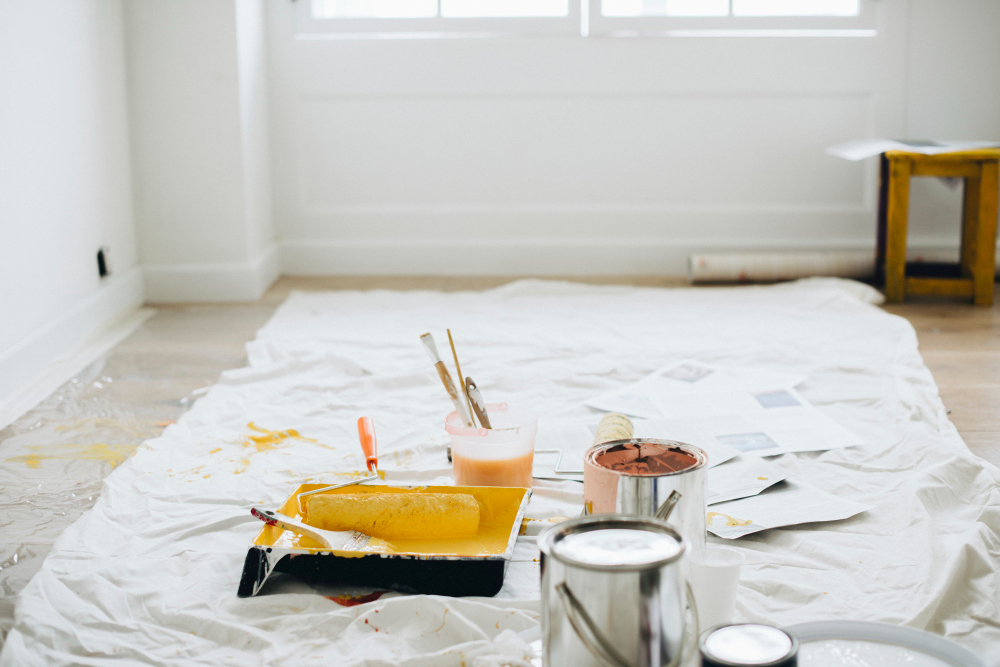Importance of Masking a Room Before Painting

Painting a room can be an invigorating way to refresh your living space, increase your home's value, and personalize your surroundings. However, there is one step many DIY enthusiasts overlook, yet professionals never skip: masking. Masking is not just about protecting the furniture or floor; it's crucial for achieving sharp, professional-looking edges and maintaining a clean working space. Here's why meticulous room masking should be on top of your to-do list when planning a paint project.
The Role of Masking in Painting
Masking is the process of covering areas that you don't want to paint, such as trims, windows, door frames, and floors, with tape and protective materials. This preparatory step ensures that only the intended surfaces get painted while everything else remains pristine.
Accuracy and precision
When painting, it's easy to accidentally brush against an edge or over-extend a roller stroke. Masking creates a barrier that ensures you keep within the lines, producing clean, straight lines that look sharply defined.
Protection of surfaces
Paint splatters and spills can be tough to clean, especially from carpeted floors or textured fixtures. By masking off these areas, you create a safeguard against potential mishaps that could lead to more work or even damage.
Saves time and frustration
It might seem like masking a room takes time away from the actual painting, but it's quite the opposite. You can paint more freely without constantly worrying about precision in every stroke. This liberty not only speeds up the painting process but also makes it more enjoyable.
Better finish quality
Professionally executed masking can enhance the overall finish of your painting job. It's the difference between a paint job that looks hastily done and one that exudes the meticulous touch of skilled craftsmanship.
How to Mask a Room Effectively
Here are some of the best practices for masking a room before picking up that paintbrush:
- Use quality painter's tape: Not all tapes are created equal. Painter's tape is designed to leave clean lines without damaging surfaces upon removal.
- Secure drop cloths properly: Whether you’re using plastic sheeting or fabric drop cloths, make sure they’re taped down and won't slip out of place.
- Remove fixtures if possible: Whenever you can, take down light fixtures, switch plates, and vents. It's easier to mask around larger, immovable features.
- Cover everything you don't want painted: That includes door knobs, thermostats, and hardware. It's better to be over-prepared than to end up with splattered paint on your fixtures.
- Check for tape bleed-through: To ensure super-sharp lines, make sure the tape is firmly adhered by running a putty knife or your fingers along the edge of the tape.
Partner with Professionals
While masking and painting can be a rewarding DIY project, the precision, tool requirements, and time investment could lead you to call for professional help — especially if you're seeking flawless results without the hassle. For residents in Orlando, excellence in painting is just a phone call away.
If you're looking for painters in Orlando, FL, look no further than Lakestone Painting. Our team of professionals has the skills, tools, and attention to detail to deliver top-notch results, ensuring that every room we paint reflects our commitment to quality and customer satisfaction.
Whether you're revamping a single room or planning a full home makeover, we understand the importance of preparation — and that starts with proper masking. At Lakestone Painting, we take pride in our work every step of the way.
Take the first step toward a beautifully painted home and leave the masking tape to us. Contact Lakestone Painting today for a free consultation and see how we can transform your space with the power of paint.